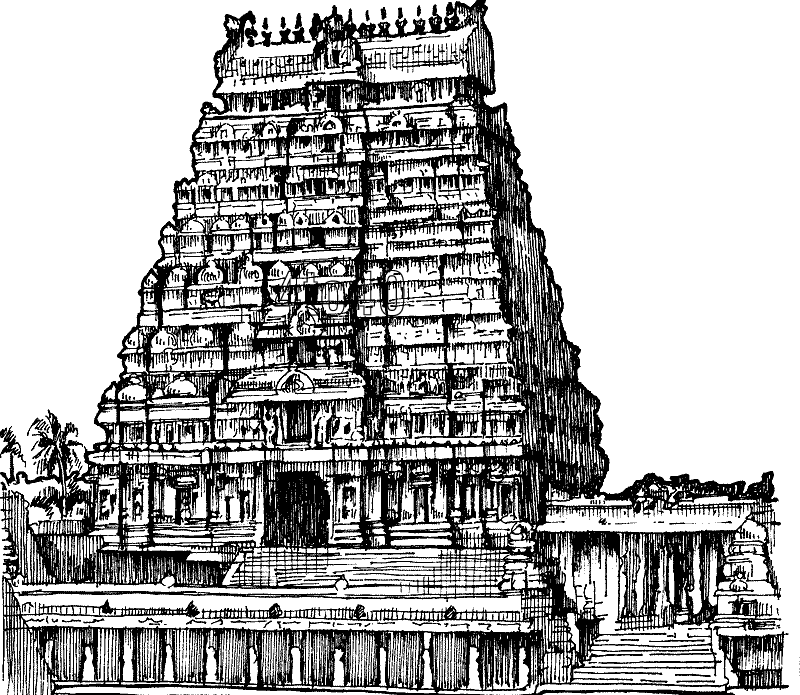LALITHA SAHASRANAMAM - Namah # 139
- S Subramaniam
- Dec 21, 2022
- 2 min read

LALITHA SAHASRANAMAM
@ S. Subramaniam
[ 44 Nirguna Nishkala Shanta Nishkama Nirupaplava ]
निर्गुणा (139)
Nirguṇa (139)
Meaning
Devi is beyond the reach of the three types of Guna-s namely Sattva, Rajas and Tamas.

Interpretation
Guna refers to Qualities and Nir negates it - therefore the word Nirguna should be understood to mean as the one who is beyond the ambit of any quality. These qualities are of course the three gunas - Sattva, Rajas and Tamas

Na -vidyate gunah yasyam sa says one of the Sanskrit quotes. From this we gather Devi is beyond the three gunas namely Satva Rajas and Tamas. She is the supreme power, the Para Shakti - and hence she is addressed by the Vaag Devi-s as Nirguna.
Sattvam Rajas Tama iti gunah Prakrti Sambhavah - says Lord Krishna in Bhagavad Gita.
Adi Shankara & Quote from Soundarya Lahari.
Adi Shankara has mentioned about the three gunas Sattva, Rajas and Tamas in SL and he adds that the three forms of Gods Brahma, Vishnu and Shiva, who represent the three guna-s, offer worship at Devi's feet.
त्रयाणां देवानां त्रिगुण-जनितानां तव शिवे
भवेत् पूजा पूजा तव चरणयो-र्या विरचिता
trayanam devanam triguna janitanam tava sive
bhavet puja puja tava charanayor ya virachita

Kanchi Paramacharya, the Maha Periyava, has given a beautiful explanation to the Shankara's quote above. Says the great sage in Deivathin Kural ( a commentary on the Voice of God) that it should be construed as the three Lords of creation, Subsistence and Destruction derive their powers from Devi Parashakti.
Author's Notes
Quote from the Yajur Veda:
Na Tasya Pratima Asti which leads us to the thinking that God is formless - God has no image. This basically refers to the Nirguna concept of worship which purely deals with meditation as opposed to Suguna type which elaborates methods and procedures of idol worship. Devi is the one who is to be meditated upon. She is Nirguna.

It may be noted that the Nirguna mantra of Yajurveda is Aham Brahmasmi.
Quote from Vilvashtakam
The opening verse of Vilvashtakam contains the word Triguna
त्रिदलं त्रिगुणाकारं त्रिनॆत्रं च त्रियायुधं ।
Tridalaṃ Triguṇakaraṃ Trinetraṃ cha Triysyudhaṃ

The three leaves of Bilva Patra represent the three gunas (S, R & T), the three eyes of the Lord and the Trident he holds. I worship him to get rid of the attachments arising from the three Guna-s. Lord Shiva & Devi Parvati alone can grant us relief from the three guna-s.
Quote from Sai Ashtakam
In one of the Slokas composed by this author, Shri Sai Ashtakam, a reference about Triguna and Nirguna is made:

Tvameva Trigunam cha Nirgunam Tvameva - Prabho Sai Natha Mama Deva Deva writes the author.
The Supreme Lord Shiva through his Messiah Shri Shirdi Sai Baba is addressed by the author as the one who controls the three guna-s, as well as gives Mukti to the devotees from the guna-s.
Disclaimer: All matters contained in this article are the property of www.templesofasia.com. The opinions expressed in this article are purely that of the author. The author alone is responsible for the accuracy, authenticity, completeness and validity of all the information in the article.


Comments